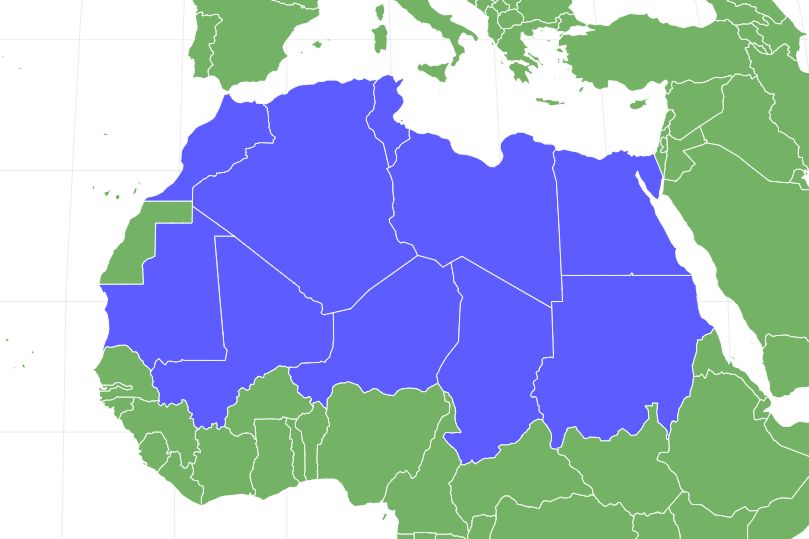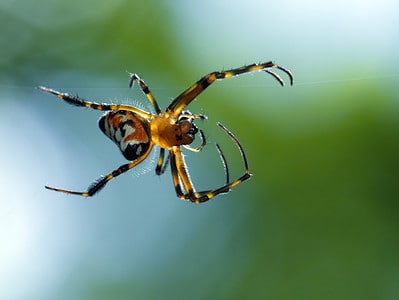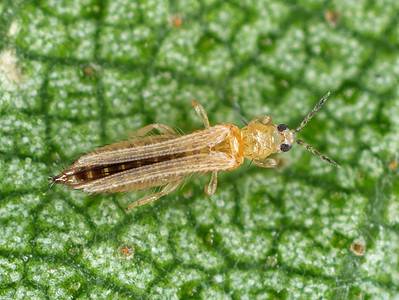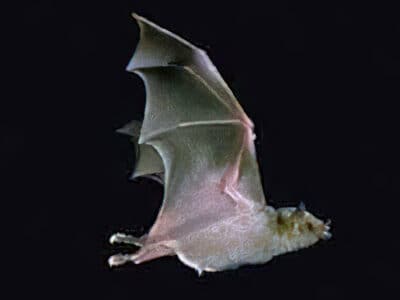Aoudad Sheep
A. lervia
More aoudad sheep live in the United States than in their original North African habitat.
Advertisement
Aoudad Sheep Scientific Classification
- Kingdom
- Animalia
- Phylum
- Chordata
- Class
- Mammalia
- Order
- Artiodactyla
- Family
- Bovidae
- Genus
- Ammotragus
- Scientific Name
- A. lervia
Read our Complete Guide to Classification of Animals.
Aoudad Sheep Conservation Status
Aoudad Sheep Facts
- Name Of Young
- lamb
- Group Behavior
- Herd
- Fun Fact
- More aoudad sheep live in the United States than in their original North African habitat.
- Estimated Population Size
- 80,000
- Biggest Threat
- hunting and habitat loss
- Most Distinctive Feature
- long backward-curling horns
- Distinctive Feature
- shaggy hair on neck, chest, and front legs
- Other Name(s)
- Barbary sheep
- Gestation Period
- 160 days
- Litter Size
- 1-3
- Habitat
- arid mountains
- Predators
- caracal, mountain lion, coyote, bobcat
- Diet
- Omnivore
- Lifestyle
- Crepuscular
- Favorite Food
- grass
- Number Of Species
- 3
Aoudad Sheep Physical Characteristics
- Color
- Brown
- Tan
- Skin Type
- Fur
- Lifespan
- 10-20 years
- Height
- 2.5-3.7 feet
- Length
- 4.3-5.5 feet
- Age of Sexual Maturity
- 18 months
- Age of Weaning
- 3-4 months
View all of the Aoudad Sheep images!
Aoudad sheep can jump 7 feet high from a stationary, standing position.
Aoudad Sheep Summary
Ammotragus lervia is a species related to sheep and goats, but a separate genus from each of them. They’re commonly known as aoudad sheep or Barbary sheep. They are indigenous to the mountains of North Africa but are now relatively rare in their native habitat and their conservation status is “vulnerable.” However, sport hunters have introduced thriving populations into the United States, Spain, Croatia, and Australia. In some of these countries they and are even considered an invasive species.
Aoudad Sheep Facts
- A popular name for this species is the Barbary sheep. “Barbary” is a corruption of the word “Berber” (one of the main tribes of North Africa), used by Europeans for Northwest African countries.
- They have sandy-brown coats, shaggy hair hanging from their throats, and backward-curving horns.
- Aoudad sheep live in arid mountain habitats. When water is not available, they can survive by drawing their hydration needs from the food they eat for up to five days.
- They’re strong, agile jumpers, leaping as high as 7 feet from a standing position.
- They number only 5,000-10,000 in their native range, but 75,000 in the United States, mostly in Texas, New Mexico, and California.
Aoudad Sheep Scientific name
The scientific name of the aoudad sheep is Ammotragus lervia. The first part of the name comes from Greek words meaning “sand” and “goat.” “Lervia” is derived from the name “lerwee” assigned to this species by an early explorer. “Aoudad” is the Berber language name for this species. Another colloquial name for them is the Barbary sheep. “Barbary” is a corruption of the word “Berber.” It was a common term used by Europeans for the northwest African coast.
Aoudad Sheep Appearance
The aoudad sheep is similar in appearance to the North American bighorn sheep. For example, it has a large, stocky build, a short light reddish-brown coat, back-curved horns, and long shaggy hair on its front. The coat is lighter in young aoudads but darkens with age. The aoudad’s coloration enables it to blend in with the sandy rocks of arid mountain environments. Both species have horns. In rams (males) they can grow over 30 inches long, but they are shorter in ewes (females). In ewes, the patch of long hair covers only their throat, but in rams it also covers the front legs and the chest. As for size, the aoudad ranges from 4.3-5.5 feet long and 2.5-3.7 feet tall at the shoulder. Its weight can be anywhere from 66-319 pounds.
Aoudad Sheep Evolution and History
The aoudad is a mammal of the order Artiodactyla and the Bovidae family. Animals in this classification have cloven hooves and multi-chambered stomachs to digest vegetable matter. Bovids evolved in Eurasia about 18 million years ago in the Miocene Epoch. Evolutionary biologists assert that bovids were the most recent family of hoofed mammals to evolve.
Goats, sheep, and aoudads are part of the Caprini subfamily. Genetic research indicates sheep and goats diverged into distinct species about four million years ago. Genetics also indicate that the aoudad sheep is more closely related to goats than to sheep, so its name is a misnomer. Aoudads rarely breed with goats, but when they do, they can produce live hybrid young.
There are six subspecies of aoudad sheep:
- A. I. lervia
- A. I. ornata
- A. l. sahariensis
- A. l. blainei
- A. l. angusi
- A. l. fassini
Aoudad Sheep Behavior
Aoudad sheep live in small herds with a ram and several ewes. Like bighorn sheep, aoudad males have the extraordinary practice of running toward each other and slamming their heads together in dominance displays. Rams of different ages can live together peacefully, but those of the same age will fight fiercely over desirable mates during the breeding season.
They have excellent eyesight and can jump from a standing position seven feet in the air to reach a higher vantage point. Facing danger, they stand very still to avoid attention, but if chased, they will often use their strength and agility to get to higher ground where their predators may have difficulty following. Aoudads are generally not aggressive toward other hoofed species, though at times they may try to dominate those that are smaller than they are.
Aoudad Sheep Habitat
Aoudads frequent rocky, mountainous areas in arid desert or semi-arid climates. They are most active when the temperature is cooler at dawn and dusk but take shelter in the shade of trees, caves, or rocky overhangs when the blazing desert sun is at its hottest. Their native habitat covers most of the Sahara Desert, from Morocco to Egypt, but aoudad sheep have been introduced into the United States, Spain, Croatia, and Australia. In the United States, they are hardier and more competitive than the indigenous bighorn sheep. In fact, in Texas alone, there are now 30,000 aoudad sheep compared to only 1,500 bighorns.
Aoudad Sheep Diet
Aoudad sheep require water only infrequently. Their bodies are efficient at extracting moisture from their herbivorous diet, so they can go up to five days without an actual drink of water. If it is available though, they will guzzle it down and wallow in it with pleasure. In the winter, aoudads eat various grasses. The rest of the year their diet is more diversified with shrubs and flowering plants.
Aoudad Sheep Predators and Threats
In years past, leopards stalked aoudads in their natural habitat, but today very few leopards or any other large predators are left in North Africa. As a result, their only natural predator now is the caracal, a medium-sized desert cat. On the other hand, in the American southwest, aoudads are prey for mountain lions, coyotes, and bobcats. In addition to overhunting, other reasons aoudads are vulnerable in their original range include habitat loss due to development, warfare, and resource extraction, as well as climate change.
Wherever they live, humanity is the greatest threat to aoudads. In North Africa, desert tribes hunted aoudads for their tender, tasty meat and hides that are useful for making a variety of clothes and products. In the United States, exotic game hunters legally hunt them as trophy kills.
Aoudad Sheep Reproduction and Life Cycle
Aoudad sheep reproduce more easily and more frequently than similar species, such as the bighorn sheep. As a result, this gives them a great competitive advantage in places like Texas where they share the same habitat. The main breeding season for aoudad sheep is September to November, but they will still breed any time of year. Ewes may have two pregnancies a year. The gestation period is about 160 days and lambs are often born March through May. Twins are not uncommon, and in especially favorable conditions ewes may even have triplets. Lambs are weaned at 3-4 months and they reach sexual maturity at 18 months. Aoudads live in small herds made up of a dominant male, a group of females, and their offspring. In the wild, they live up to 10 years or so, but in captivity, their lifespan can double to 20 years.
Aoudad Sheep Population
In their native range in North Africa, aoudad sheep number only an estimated 5,000-10,000 individuals. They are classified as a “vulnerable” species and protected in some of the countries where they live. They were introduced into the United States at the beginning of the 20th century as a game species and have been wildly successful. Today, they number approximately 75,000 in the United States, mostly in Texas, California, and New Mexico. Hunting aoudad is legal all year round in Texas to control the population and prevent them from completely replacing indigenous bighorn sheep.
Related Animals
View all 194 animals that start with AAoudad Sheep FAQs (Frequently Asked Questions)
What country has the most aoudad sheep?
The United States, with 75,000 free-range specimens. There are only 5,000-10,000 in the species’ native range in North Africa.
Is aoudad sheep meat good to eat?
Yes. Reportedly, when it is properly prepared it is tender and tasty.
Why are aoudad sheep a danger to the survival of bighorn sheep?
Aoudads and bighorn sheep live in the same habitats, but aoudads are hardier and give birth more frequently. If not controlled, they could take over the entire mountain environment.
Thank you for reading! Have some feedback for us? Contact the AZ Animals editorial team.
Sources
- Wikipedia , Available here: https://en.wikipedia.org/wiki/Barbary_sheep
- IUCN Redlist, Available here: https://www.iucnredlist.org/species/1151/3288917
- Animal Diversity Web, Available here: https://animaldiversity.org/accounts/Ammotragus_lervia/

















